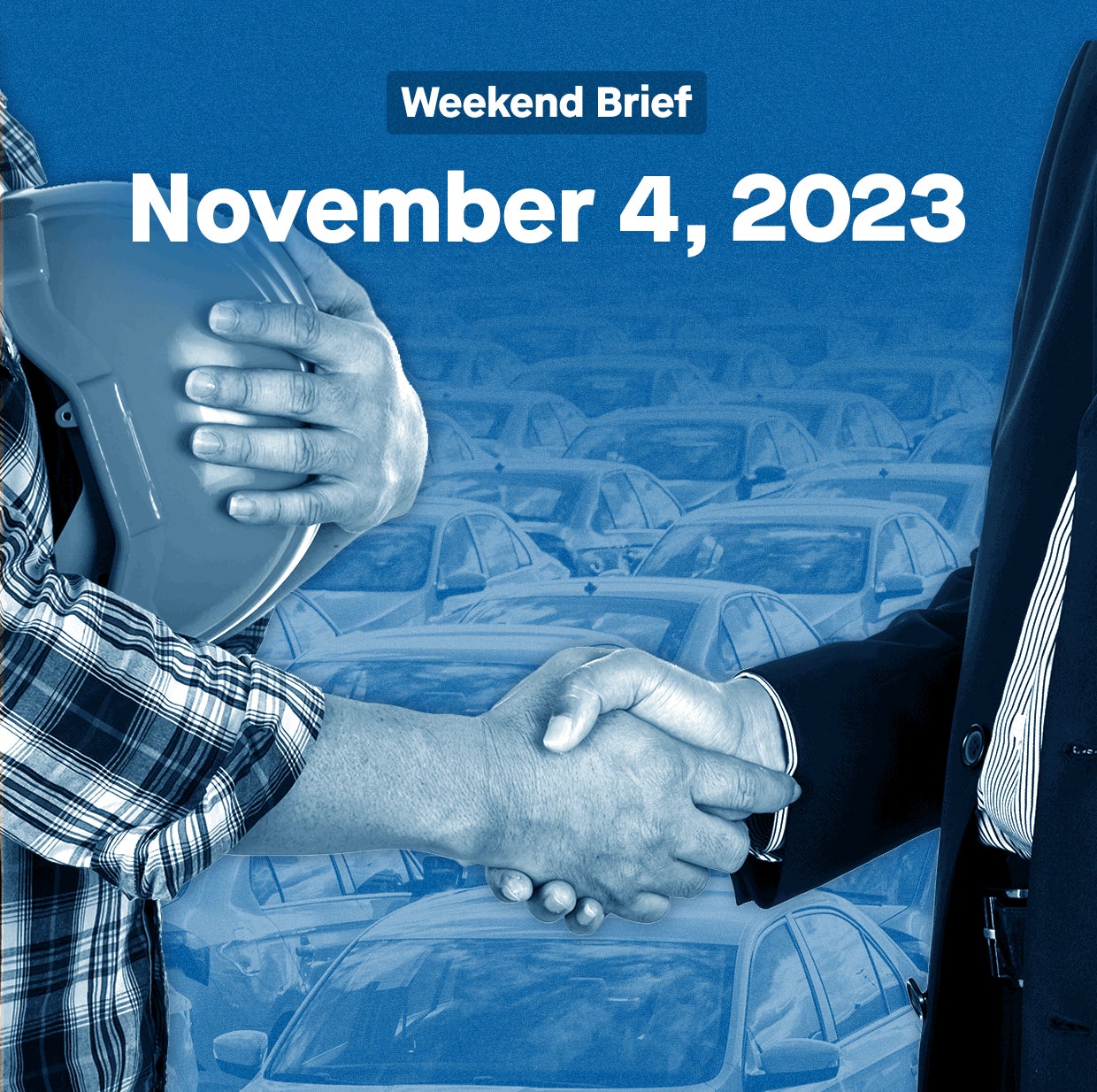Automotive for the people
Detroit's auto workers won big in their strike negotiations. What does it mean for car buyers?


Hi Quartz members!
Just as the memory of summer is fading, so too is the summer of strikes winding slowly down. Hollywood’s writers have a deal with their studios, and the actors’ negotiations are making progress. The Teamsters wrested new terms from UPS. And members of United Auto Workers are beginning to ratify agreements with the Big Three US car manufacturers—Ford, Stellantis, and General Motors—after a six-week strike that caused the companies an estimated $4.3 billion in losses.
For the organized workers in Detroit’s auto industry, the agreement is a win, not only for its material benefits (on which more below) but for its symbolic flex of union power. The success of the strike and the negotiations may owe a lot to the post-pandemic tightness of the labor market, but they will nonetheless inspire future union activity elsewhere.
In the way that companies do, the auto manufacturers will inevitably pass on the higher costs of labor to customers. John Lawler, Ford’s CFO, has estimated that the new contract will push up labor costs by $850 to $900 per vehicle. Lauren Fix, an auto expert with Car Coach Reports, told Quartz’s Heather Landy that she expects to see a $1,000 to $1,500 rise in the market price per vehicle.
Further, Fix said, auto giants will look to offset their losses elsewhere. “They’re going to cut down their middle marketing, they’re going to cut down their product line, which is going to impact you as a consumer for your options,” she argued. And the companies will try to keep producing gas, hybrid, and diesel-powered vehicles “that they actually make money on,” she said, rather than making more EVs.
WHAT THE UAW WON
⬆️ Fully vested production line workers will get cumulative hourly pay increases of 27%. In some skilled trades, these raises go above 30%. The hourly wages of skilled workers will rise to $50.97 over the course of the new contract, which runs until 2028.
🍾 Cost of living adjustments will be reinstated. The UAW had bargained away such adjustments back in 2009, when the auto industry was suffering the aftershocks of the financial crisis (and when inflation was barely on anyone’s radar screen).
🚗 Detroit’s much-resented two-tier system of autoworkers, in which people were often paid differently for the same work, will disappear after 16 years.
🔋 Workers at factories that make fossil-fuel cars, or parts for such cars, will have the chance to transfer to EV plants. Ford is also allowing UAW to unionize workers at its upcoming battery plant in Michigan and at its new EV factory in Tennessee.
⏲️ The negotiated contract runs out in 2028, an unusually long term—and strategically so. UAW plans to spend the next five years trying to organize workers at other companies like Nissan, Tesla, and Toyota. “When we return to the bargaining table in 2028 it won’t just be with the Big Three, but with the Big Five or Big Six,” UAW president Shawn Fain said.
QUOTABLE
“UAW—that stands for ‘You are welcome.’”
—Shawn Fain, the endlessly quotable president of UAW, speaking to Toyota workers last week. Toyota’s workers are not organized, but they received a pay raise this week that Fain described as the company’s bid to stave off any intent to unionize under UAW.
ONE 🇲🇽 THING
On the southern horizon, a risk still looms for UAW: that American car companies will more of their production into Mexico, to cut costs and escape the influence of the unions. (To qualify for the Biden administration’s EV tax credits, after all, such vehicles can be manufactured anywhere in North America.) For the UAW, “that’s where the international solidarity aspect of it comes in—the need to build up a cross-border network with Mexico,” Peter Olney, a former director with the International Longshore and Warehouse Union, told the New York Times.
In Mexico, US auto firms have been able to rein workers in more tightly. Older unions have often worked hand in glove with corporations, compelling employees to start independent unions. When staff at VU, a Michigan-based auto upholstery manufacturer, formed one such independent union in January this year, the company dug its heels in, first slowing down production and laying off workers, and then shutting its factory altogether. “Unfortunately, the company undermined the majority union’s ability to represent workers in collective bargaining negotiations and their right to strike,” a US Department of Labor spokesperson said.
Adjusted for cost of living, the wages paid out to workers in Mexico are always likely to be lower than those paid in the US. But if Mexican unions get stronger, it will become more difficult for US auto giants to contemplate flying south purely for the benefits of cheap, unorganized labor.
Thanks for reading! And don’t hesitate to reach out with comments, questions, or topics you want to know more about.
Have a strikingly excellent weekend!
—Samanth Subramanian, Weekend Brief editor